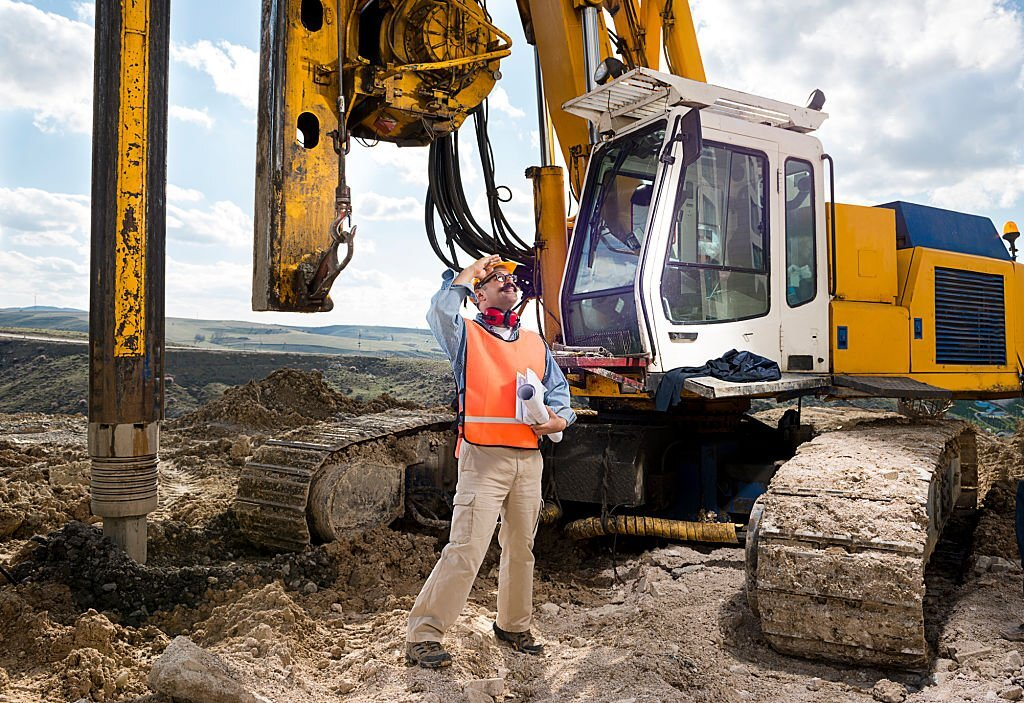
Operating drilling equipment requires careful attention to safety protocols to prevent accidents and create a secure workplace environment. Whether you’re working in construction, mining, or any other industry that involves drilling operations, adhering to the right safety measures is essential. This article outlines key guidelines to ensure the safety of personnel and equipment during drilling operations.
1. Proper Training and Certification: Before operating any drilling equipment, ensure that all personnel are adequately trained and certified to handle the specific machinery. Proper training equips operators with the knowledge of equipment functions, potential hazards, and emergency procedures. A well-trained operator can make informed decisions that reduce the risk of accidents.
2. Inspection and Maintenance: Regular inspection and maintenance of drilling equipment are vital to its safe operation. Before each use, inspect all components for signs of wear, damage, or malfunction. This includes checking for loose bolts, worn-out parts, and leaks. Address any issues promptly to prevent equipment failure during operation.
3. Personal Protective Equipment (PPE): Operators must wear appropriate personal protective equipment (PPE) to safeguard themselves from potential hazards. This includes safety helmets, protective eyewear, ear protection, gloves, and steel-toed boots. PPE acts as a barrier against flying debris, noise, and other workplace hazards.
4. Work Area Preparation: Clear the work area of any obstacles, tripping hazards, and flammable materials before starting drilling operations. Ensure that warning signs are prominently displayed to alert others about ongoing work and potential danger zones.
5. Emergency Procedures: Establish clear and effective emergency procedures that all personnel are familiar with. Designate evacuation routes, and assembly points, and provide access to emergency equipment such as fire extinguishers, first aid kits, and communication devices.
6. Secure Workpiece Clamping: Ensure the workpiece is securely clamped or anchored before drilling begins. This prevents unexpected movement or shifting during operation, reducing the risk of accidents and ensuring accurate drilling results.
7. Proper Tool Selection: Choose the appropriate drilling tool and accessories for the specific task at hand. Using the wrong tools can lead to inefficiencies, increased wear on equipment, and potential safety hazards. Consult the equipment’s manual and guidelines for proper tool selection.
8. Controlled Operating Conditions: Drilling operations should take place in controlled conditions. Avoid working in adverse weather, extreme temperatures, or low-light situations that can compromise operator visibility and equipment performance.
9. Operator Communication: Maintain clear communication between operators and other personnel in the vicinity. Use hand signals, radios, or other communication devices to coordinate movements and actions, ensuring everyone’s safety.
10. Regular Training and Updates: Safety protocols and technology evolve over time. Schedule regular training sessions to keep operators updated on the latest safety measures and equipment advancements. This ongoing education enhances operator awareness and reduces the risk of accidents.
Enhancing Workplace Security: Effective Safety Measures for a Safer Environment

Creating a secure workplace environment is paramount for the well-being of employees and the protection of sensitive information. By implementing robust safety measures, companies can prioritize workplace security and safeguard against potential threats. This article outlines key strategies that contribute to enhancing workplace security, ranging from access control to risk assessment and employee training.
1. Access Control for Physical Security
One of the fundamental aspects of workplace security is controlling access to the premises. Implement a secure access control system that restricts entry to authorized personnel only. This can include key cards, biometric scanners, and PIN codes to ensure that individuals without proper clearance cannot enter sensitive areas.
2. Password Protection Tools and Data Security:
In the digital age, data security is as critical as physical security. Utilize robust password protection tools and encourage employees to use strong, unique passwords for their accounts. Employ multi-factor authentication for an extra layer of security, reducing the risk of unauthorized access to sensitive information.
3. Risk Assessment and Prevention:
Conduct regular risk assessments to identify potential vulnerabilities in the workplace. Assess both physical and digital risks, such as building security, data breaches, and workplace violence. Once identified, develop strategies to mitigate these risks and prevent incidents from occurring.
4. Training Employees for Security Awareness:
Well-informed employees are a crucial line of defense against security breaches. Provide comprehensive security awareness training that educates employees about the importance of security protocols, how to identify potential threats, and how to respond in case of emergencies. Regular training sessions reinforce security practices and ensure that employees remain vigilant.
5. Enhancing Physical Security Measures:
Invest in physical security measures to protect office buildings and premises. Install surveillance cameras, alarms, and secure locks to deter unauthorized access and monitor any suspicious activities. Visible security measures alone can discourage potential intruders and enhance overall workplace security.
6. Addressing Workplace Violence:
Preventing workplace violence is essential for maintaining a safe environment. Establish clear policies and protocols for handling conflicts and potentially violent situations. Encourage employees to report any concerns promptly, ensuring that the necessary actions are taken to prevent escalation.
7. Handling Security Breaches:
Despite preventive measures, security breaches can still occur. Develop a well-defined incident response plan to address security breaches effectively. This plan should outline the steps to take when a breach is detected, including notifying relevant parties, containing the breach, and conducting a thorough investigation.
8. Collaboration with Health Administration:
Workplace security goes hand in hand with occupational health administration. Collaborate with health administrators to address any potential health and safety risks. Ensure that the workplace adheres to health and safety regulations, further contributing to a secure environment.
9. Promoting the Use of Safety Gear:
Depending on the nature of the workplace, provide employees with appropriate safety gear to protect them from potential hazards. This includes equipment such as helmets, gloves, goggles, and protective clothing. Proper safety gear ensures employees can perform their duties without compromising their well-being.
10. Continuous Improvement and Adaptation:
Workplace security is an ongoing process. Regularly review and update security protocols to adapt to new threats and technologies. Stay informed about the latest security trends and solutions to stay ahead of potential risks.
The Vital Role of Facility Managers in Ensuring Workplace Safety and Security

Facility managers are unsung heroes who play a pivotal role in maintaining a secure and safe work environment. Their responsibilities encompass various aspects of workplace safety and security, from preventing incidents to creating emergency plans. In this article, we’ll explore the key functions of facility managers and how they contribute to safeguarding employees, building owners, and assets.
Preventing Incidents Through Vigilance:
One of the primary responsibilities of facility managers is to proactively identify and address potential hazards within the workplace. By conducting thorough risk assessments, they can pinpoint areas of concern and take necessary steps to mitigate risks. Whether it’s a slippery floor, faulty wiring, or malfunctioning equipment, facility managers ensure that preventive measures are in place to avert accidents and injuries.
Developing Comprehensive Emergency Plans:
Facility managers are instrumental in creating effective emergency plans that outline procedures for various crisis scenarios. These plans encompass natural disasters, fires, medical emergencies, and other unforeseen events. By collaborating with building owners and stakeholders, facility managers ensure that every person within the facility knows what to do in case of an emergency, helping minimize chaos and ensuring a coordinated response.
Designating a Specific Person for Coordination:
In emergencies, clear communication and organized responses are essential. Facility managers often appoint a specific person or team to coordinate emergency actions. This individual serves as a point of contact, relaying information, guiding evacuations, and ensuring that employees and visitors are accounted for during critical situations.
Implementing Access Control Measures:
Controlling access to a facility is vital for maintaining security. Facility managers work with building owners to implement access control measures such as key cards, security codes, and biometric systems. These measures prevent unauthorized entry, ensuring that only authorized individuals have access to specific areas, further enhancing overall workplace safety.
The Crucial Role of Employers in Ensuring Workplace Safety: Responsibilities, Benefits, and Risk Management

Ensuring workplace safety is a paramount responsibility for employers, driven by the importance of maintaining employee well-being and minimizing risks. As employers create and manage work environments, they play a critical role in safeguarding workers, equipment, and resources. This article delves into the significance of employer-driven safety measures, the benefits they provide, and the necessary steps to mitigate risks.
The Importance of Workplace Safety:
Employers shoulder the responsibility of prioritizing workplace safety as a core business value. By providing a secure environment, employers not only protect their workers but also contribute to enhanced productivity, reduced turnover, and a positive company reputation.
Monitoring and Identifying Risks:
Employers must continuously monitor workplaces to identify potential hazards. By understanding risks associated with equipment, processes, and locations, employers can develop effective strategies to prevent accidents and injuries. Regular monitoring ensures that safety protocols align with evolving risks.
Employee Training and Compliance with Regulations:
Employee training is a crucial aspect of workplace safety. Employers are responsible for ensuring that workers are well-trained and knowledgeable about safety protocols. Adhering to industry regulations and standards is paramount, as it establishes a baseline for safe practices and reduces the likelihood of compliance issues.
Implementing Controls and Prevention Measures:
Employers are tasked with implementing effective controls to mitigate risks. This involves creating and enforcing safety rules, utilizing personal protective equipment (PPE), and employing engineering controls to minimize exposure to hazards. Proactive measures significantly reduce the potential for accidents and injuries.
Developing Emergency Plans and Drills:
In the event of emergencies, such as fires, natural disasters, or medical incidents, employers must have well-defined emergency plans in place. Conducting regular emergency drills ensures that personnel are familiar with protocols and can respond effectively in high-stress situations.
Data and Resource Management:
Employers should manage data related to workplace safety incidents, near misses, and corrective actions taken. This data provides insights into potential areas for improvement and helps determine the most effective safety measures. Adequate allocation of resources to safety initiatives is essential for sustained success.
Vulnerable Locations and Special Personnel:
Certain work locations or personnel may be more vulnerable to safety risks. Employers must identify these areas and individuals and implement specialized safety measures tailored to their needs. This could include additional training, enhanced controls, or unique emergency response plans.
Benefits of Employer-Driven Safety Initiatives:
Improved Employee Morale: A safe workplace fosters a positive environment where employees feel valued and cared for, leading to higher morale and job satisfaction.
Reduced Costs: Prevention of accidents and injuries minimizes medical expenses, insurance claims, and potential legal liabilities.
Higher Productivity: Employees can focus on their tasks without safety concerns, leading to increased productivity and efficiency.
Positive Reputation: Companies known for prioritizing workplace safety gain a reputation for responsibility and ethical business practices.
Helpful Tips for Employers:
Lead by Example: Demonstrate a commitment to safety by following protocols and wearing appropriate safety gear.
Regular Training: Conduct regular safety training sessions to keep employees informed and aware.
Open Communication: Encourage employees to report safety concerns or near misses promptly.
Continuous Improvement: Regularly review and update safety protocols to adapt to changing risks.
Emergency Drills: Practice emergency scenarios through drills to ensure effective responses.
In conclusion
Operating drilling equipment demands strict adherence to safety measures to protect personnel, equipment, and the work environment. By following proper training, maintenance, and operational guidelines, you can significantly reduce the risk of accidents and contribute to a secure workplace where everyone can perform their tasks with confidence. Prioritize safety and maintain a culture of vigilance to ensure the well-being of all involved in drilling operations.

